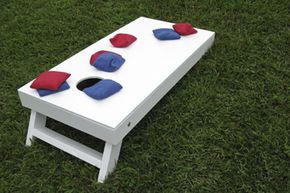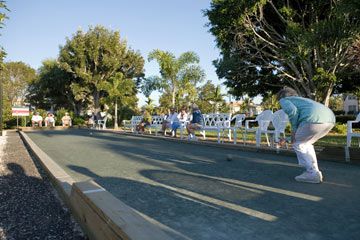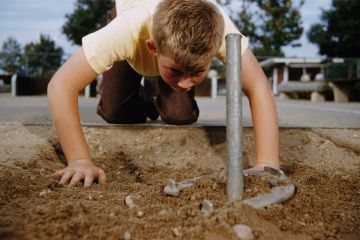Country crooner Dierks Bentley plays it in the parking lot before his concerts. Fellow singer Craig Campbell and former New England Patriots offensive lineman Matt Light host tournaments that feature it as entertainment. And scores of families enter into amateur competitions throughout the United States. What is it? Bean bag toss, of course [sources: Betts, Light Foundation, Watts].
Bean bag toss, otherwise known as cornhole or corn toss, is a game in which players take turns throwing a square corn- or bean-filled fabric bag at a hole in a wooden platform from a distance of about 30 feet (9.1 meters).
Advertisement
Like most backyard games, the rules of cornhole can vary. But we're going to spell them out as written by the American Cornhole Association, which bills itself as the largest organized cornhole association in the U.S. The platform should be a 48-inch by 24-inch (122-centimeter by 61-centimeter) rectangle made of half-inch (1.27 centimeter) plywood that has been sanded and covered in high gloss paint for a smooth finish. The front of the platform is elevated 2.5 inches to 4 inches (6.35 centimeters to 10.1 centimeters); the back of the platform, which is farthest away from the player and contains the hole, is elevated to 12 inches (30.4 centimeters) to form a 90 degree angle with the floor, somewhat like an easel.
The hole in the board should be 6 inches (15.2 centimeters) in diameter and centered 9 inches (23 centimeters) from the top and 12 inches (30.4 centimeters) from either side of the platform. The bags you're using to throw should be 6 inches square [source: American Cornhole Association].
If bean bag toss is starting to sound a lot like a game of horseshoes, you aren't off the mark. The primary difference is the weight of the object being tossed, since horseshoes weigh more than the regulation 14-ounce to 16-ounce (396- to 453-gram) corn bags. This may be why bean bag toss is sometimes called "soft horseshoes." And just as with horseshoes, players earn more points the closer the bag lands to the target. If the bag enters the hole cleanly and falls through, players earn the most possible points [source: American Cornhole Association].
Fortunately for game players who enjoy a challenge, the game of bean bag toss is deceptively simple. Sure, the object is to toss the bag in the hole, but that's not as easy as it sounds.
Advertisement


